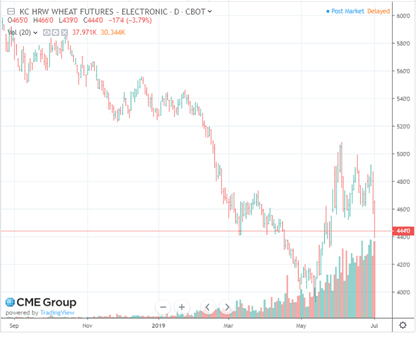USDA reports 94% of the corn has emerged in the 18 reported states, 6 percentage points behind average. Iowa stands at 98%, Kansas 97%, Nebraska 99% and South Dakota 96%. Condition ratings in the 18 states and in the states we follow have not changed more than 2 points from the prior week.
Soybeans continue to be modestly behind average, with 92% planted against a 99% average in the 18 states. Iowa is 97% complete, Kansas 91%, Nebraska 98% and South Dakota 97%. It is true some acres may have shifted to prevent plant, moving a farmer’s report of planted higher (if you call it quits, you are 100% done), but the improved field work days last week likely reduced that impact compared with the week earlier.
Emergence is further behind for soybeans. Iowa is at 90% for 9 points behind average; Kansas, at 82%, is 6 behind; Nebraska, 96%, 2 behind; and South Dakota 82%, 17 behind.
As is the case with corn, soybean condition has not changed more than 2 points from last week.
Prevent Plant
Prevented planting acres have been as high as 10 million in the past, and Bill Northey, USDA's undersecretary for farm production and conservation, said claims this year could easily exceed that level as a result of excess moisture and flooding.
As of July 1, the Risk Management Agency (RMA) has paid roughly $151 million in prevent-plant claims, with most claims coming from the upper Midwest and along the Mississippi River.
“We expect that to certainly pass the $1 billion mark if you look at the acres in the prevent-plant area,” Northey said. RMA expects that by the end of July it will better understand claim amounts for the 2019 growing season.
USDA is encouraging farmers to plant cover crops on prevent-plant acres, which would then be eligible for a minimal payment under the next round of the Market Facilitation Program, the Trump administration's trade assistance package for farmers.
Farmers who want to grow cover crops also are eligible for cost-share assistance from the Environmental Quality Incentives Program (EQIP) operated by the Natural Resources Conservation Service. Certain states, including Kansas, Nebraska and South Dakota, have started special signups for farmers who could not get into their fields this spring. Deadlines vary by state and producers need to visit with their local NRCS office.
For this year only, USDA is allowing cover crops on prevent-plant acres to be chopped for silage, harvested as hay or grazed as soon as Sept. 1. The normal date is Nov. 1. Cover crops still cannot be harvested for seed or grain.
Winter wheat
Winter wheat harvest has progressed to 30% in the 18 reporting states, but that is still 18 points behind average. Kansas is only 28% complete, compared with 61% average, and Nebraska has not yet started (8% is average). South Dakota, at zero, is 2 points behind.
Heading reached 100% in Kansas, 98% in Nebraska and 93% in South Dakota.
In the 18 states, condition is 63% good/excellent, up 2 points from last week and only 37% last year; 10% poor/very poor, 1 point less than last week and compared with 34% last year. Condition is 55% good/excellent and 16% poor/very poor in Kansas, while Nebraska is rated 73% good/excellent and 6% poor/very poor. South Dakota has 62% in the top categories and just 5% in the bottom two.
Both hard red winter and soft red winter wheat prices are down by double digits at the close July 1. Shown is the chart for September hard red winter futures.


